Medieval Murder Maps
How students made Oxford the murder capital of late medieval England

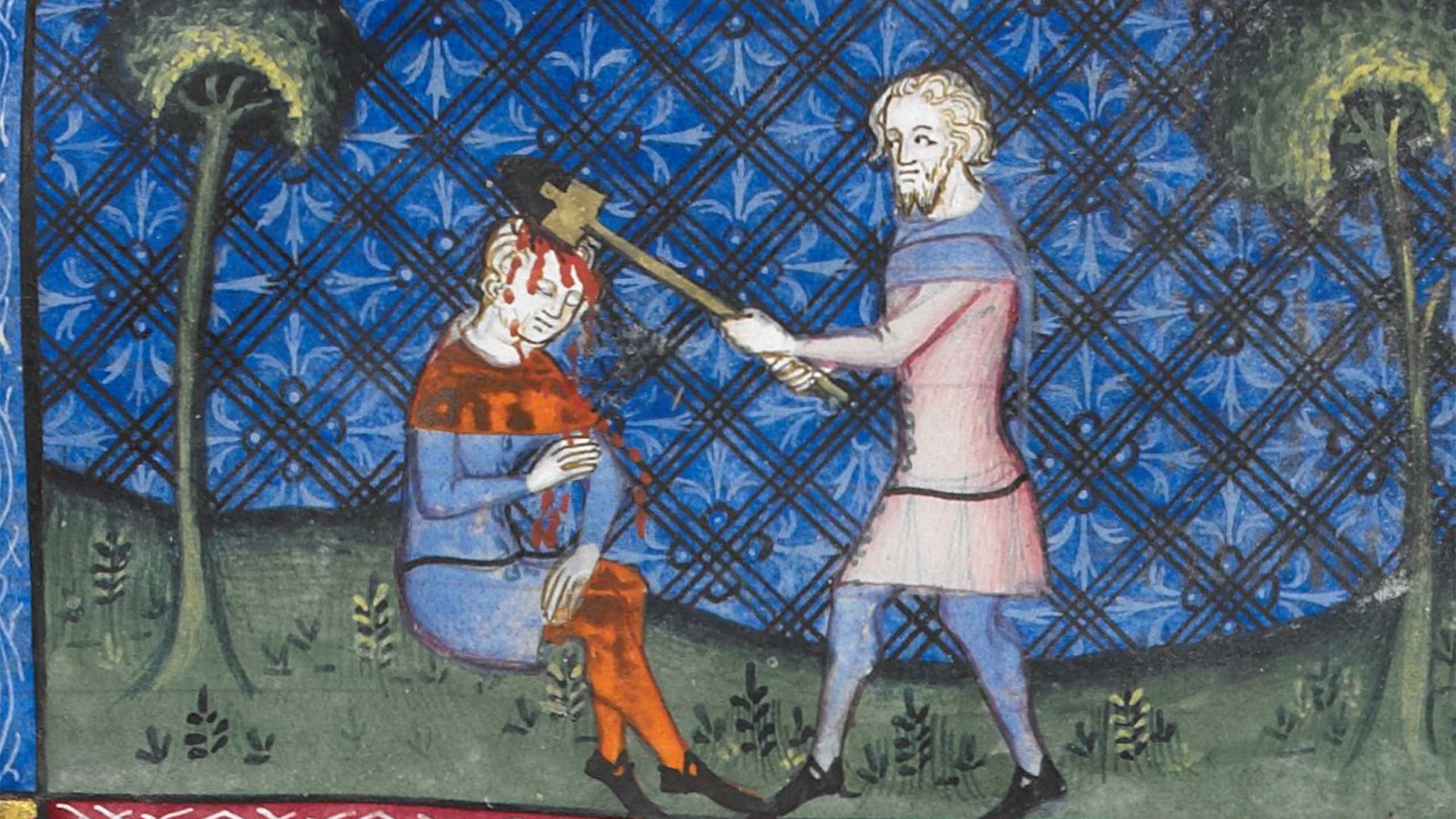
A project mapping medieval England’s known murder cases has now added Oxford and York to its street plan of London’s 14th century slayings.
The research suggests that Oxford’s student population was by far the most lethally violent social or professional group in any of the three cities.
The team behind the Medieval Murder Maps – a digital resource that plots crime scenes based on translated investigations from 700-year-old coroners’ inquests – estimate the per capita homicide rate in Oxford to have been 4-5 times higher than late medieval London or York.
Among Oxford perpetrators with a known background, 75% were identified by the coroner as “clericus”, as were 72% of all Oxford’s homicide victims. During this period, clericus is most likely to refer to a student or member of the early university.
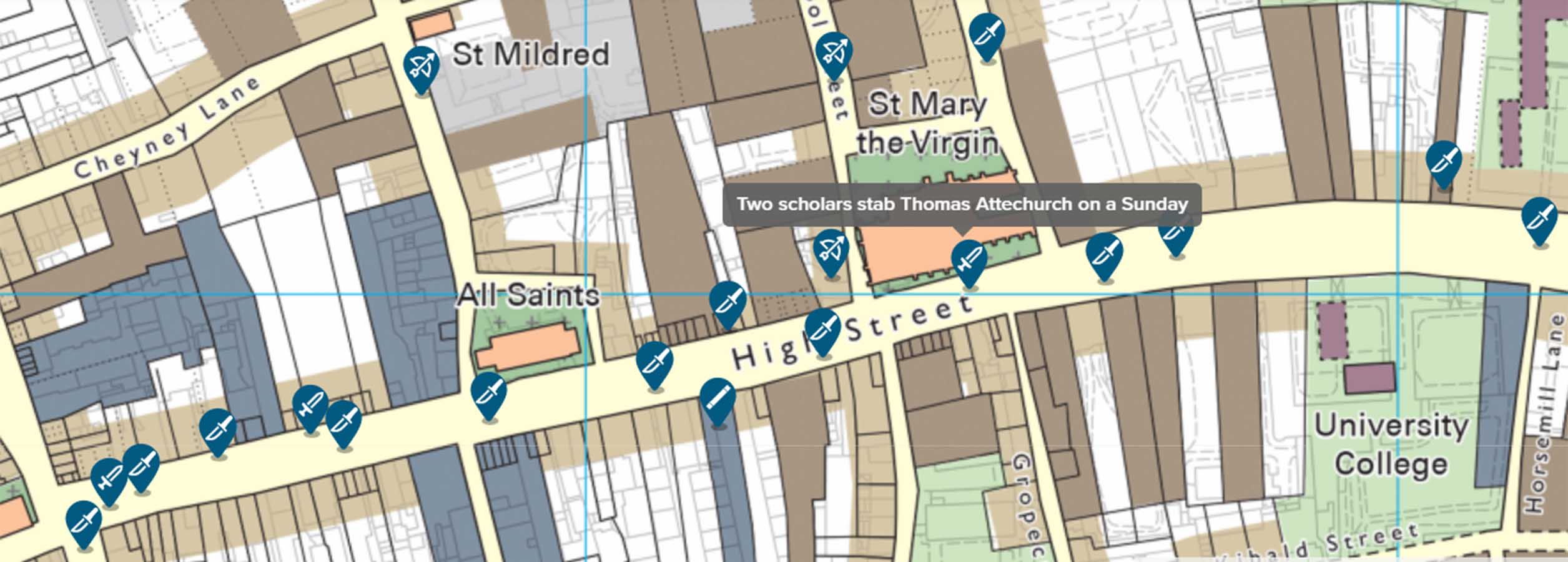
A section of the Oxford murder map.
A section of the Oxford murder map.
“A medieval university city such as Oxford had a deadly mix of conditions,” said Prof Manuel Eisner, murder map investigator and Director of Cambridge’s Institute of Criminology.
“Oxford students were all male and typically aged between fourteen and twenty-one, the peak for violence and risk-taking. These were young men freed from tight controls of family, parish or guild, and thrust into an environment full of weapons, with ample access to alehouses and sex workers.”
“As well as clashes between town and gown, many students belonged to regional fraternities called ‘nations’, an additional source of conflict within the student body,” said Eisner.
A new website, launched by Cambridge’s Violence Research Centre, allows users to compare the causes and patterns of urban violence in medieval England across three cities for the first time.
The site features a new map of York’s homicides during its 14th century “golden age” when – driven by trade and textiles – the city flourished as Black Death subsided.
Many of the York cases document feuds between artisans in the same profession, from knife fights amongst tannery workers to fatal violence between glove-makers.
Coroners’ rolls are catalogues of sudden or suspicious deaths as deduced by a jury of local residents. Recorded in Latin, they included names, events, locations, and even the value of murder weapons.
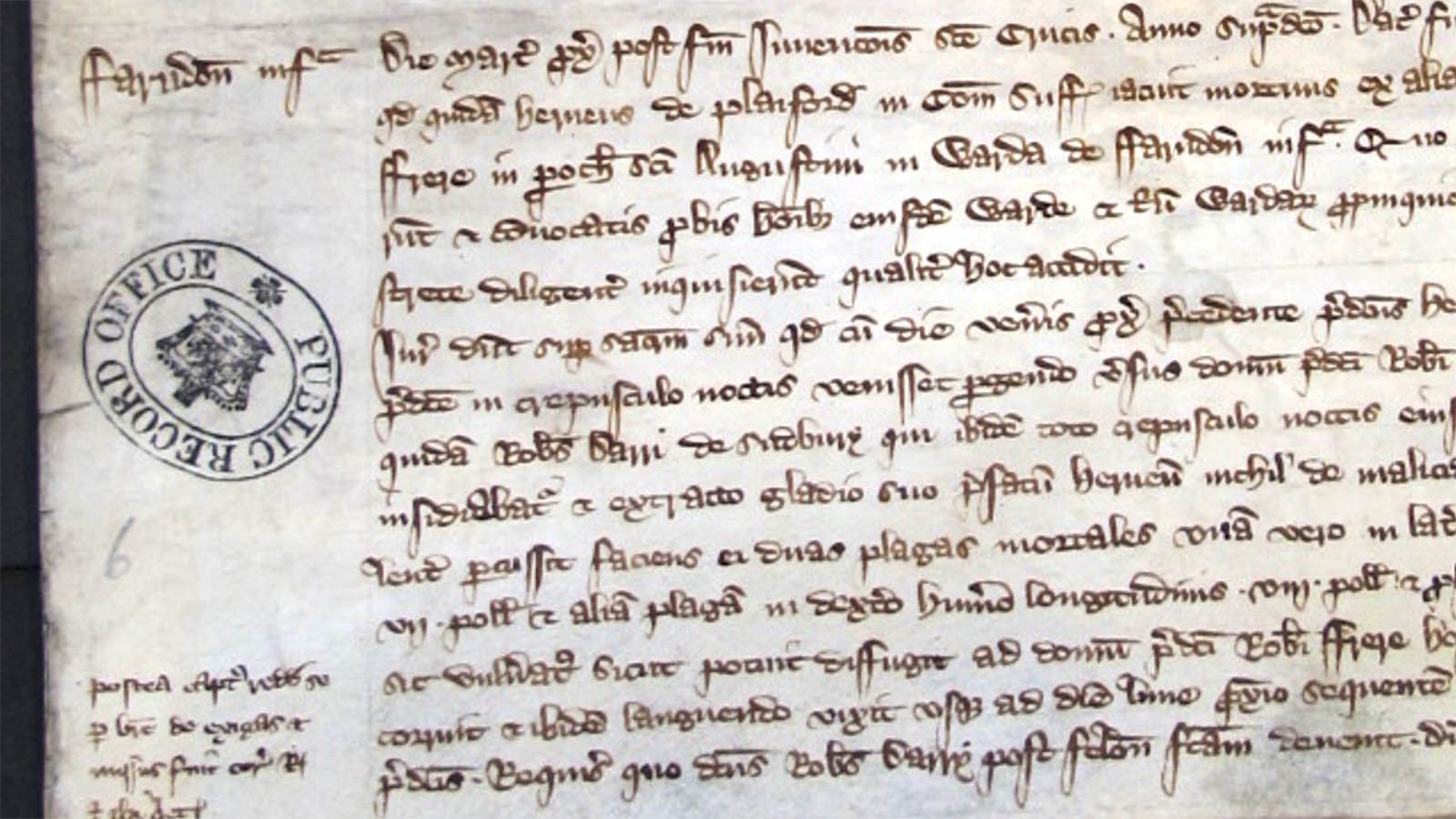
An example of the Coroners' rolls, this one recounting the 'Death of Hervey de Playford', London Roll 1315/16.
An example of the Coroners' rolls, this one recounting the 'Death of Hervey de Playford', London Roll 1315/16.
Using the rolls and maps from the Historic Towns Trust, researchers have constructed a street atlas of 354 homicides across all three cities.
Dozens of these cases now have audio versions of the inquests, so users can listen to details of the more intriguing medieval casefiles.
The original London map, published in 2018, has been remodelled and updated to include accidents, sudden deaths, sanctuary church cases, and deaths in prison – all of which the coroner recorded.
Sanctuary church incidents involved an alleged felon fleeing to holy ground, which allowed them forty days to negotiate with the coroner.
This often resulted in banishment from the realm: the felon confesses and is directed to an agreed port through which they left England for good.
“Many inquests will have been a 'best guess' based on available information”
Dr Stephanie Brown
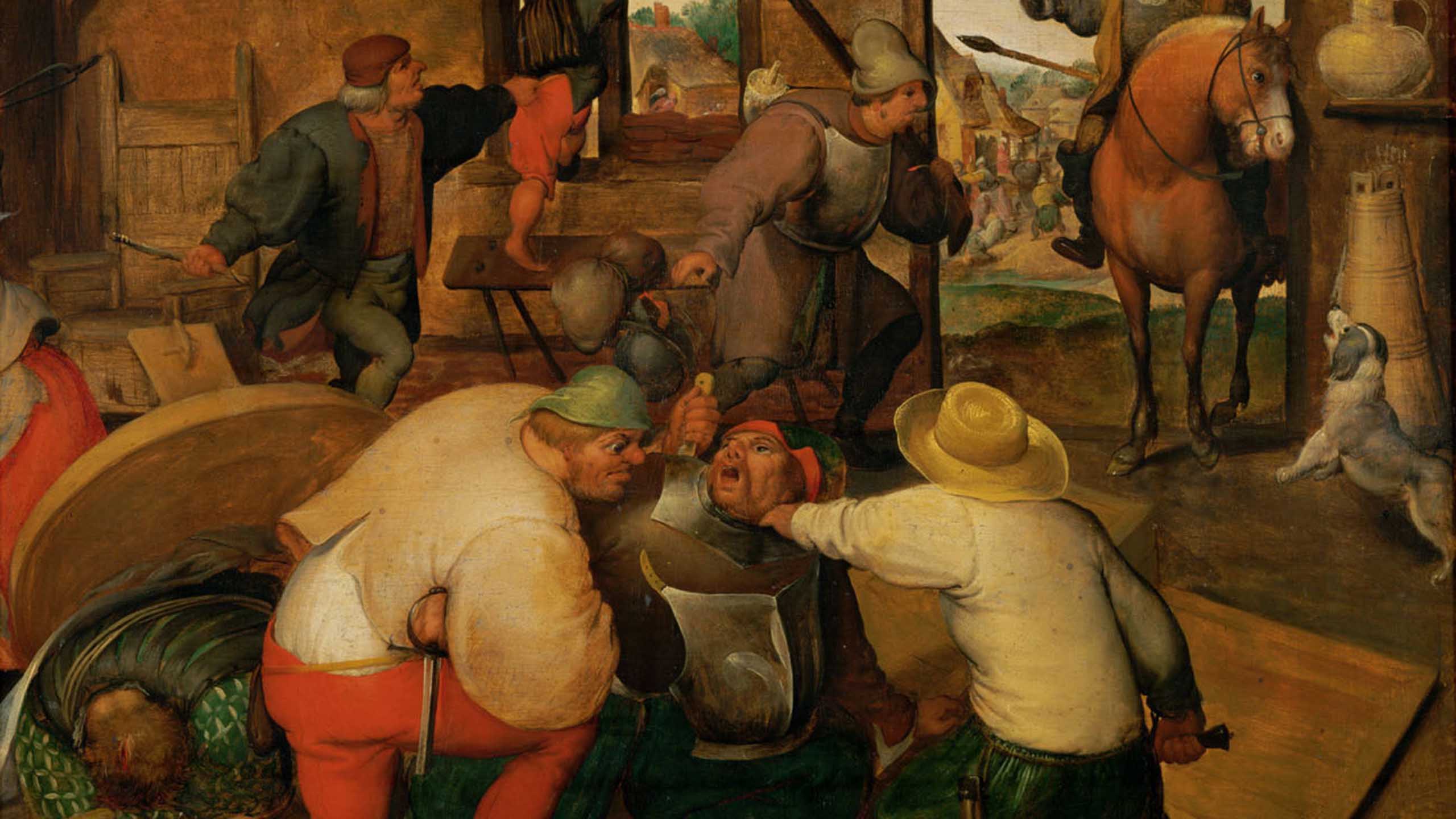
“When a suspected murder victim was discovered in late medieval England the coroner would be sought, and the local bailiff would assemble a jury to investigate,” said Eisner.
“A typical jury consisted of local men of good repute. Their task was to establish the course of events by hearing witnesses, assessing any evidence, and then naming a suspect. The indictments were summarised by the coroner’s scribe.”
These reports were a combination of detective work and rumour, say researchers. Some juries strategically constructed narratives aimed at influencing verdicts such as self-defence.
“We do not have any evidence to show juries wilfully lied, but many inquests will have been a 'best guess' based on available information,” said Cambridge historian and co-researcher Dr Stephanie Brown.
“In many instances, it is likely the jury named the right suspect, in others it may be a case of two plus two equals five.”
By the early 14th century Oxford was one of the most significant centres of learning in Europe. The city had a population of around 7,000 inhabitants, with perhaps 1,500 students.
Based on their research, Eisner and Brown estimate the homicide rate in late medieval Oxford to work out around 60-75 per 100,000. This is some 50 times higher than current rates in 21st century English cities. The mix of young male students and booze was often a powder keg for violence.
A Thursday night in 1298 saw an argument between students in an Oxford High Street tavern result in a mass street brawl with swords and battle-axes. The coroner recorded student John Burel had “a mortal wound on the crown of his head, six inches long and in depth reaching to the brain”.
Interactions with sex workers could end tragically when students became violent. One unknown scholar got away with murdering Margery de Hereford in the parish of St. Aldate in 1299 when he fled after stabbing her to death instead of paying what he owed for intercourse.
In another incident, a gang of students killed one of their own, David de Trempedhwy, after he brought back a “harlot” named Christiana of Worcester to their school in the winter of 1296. They also escaped justice.
“Each case provides a glimpse of the dynamics that created a burst of violence on a street in England some seven centuries ago”
Prof Manuel Eisner
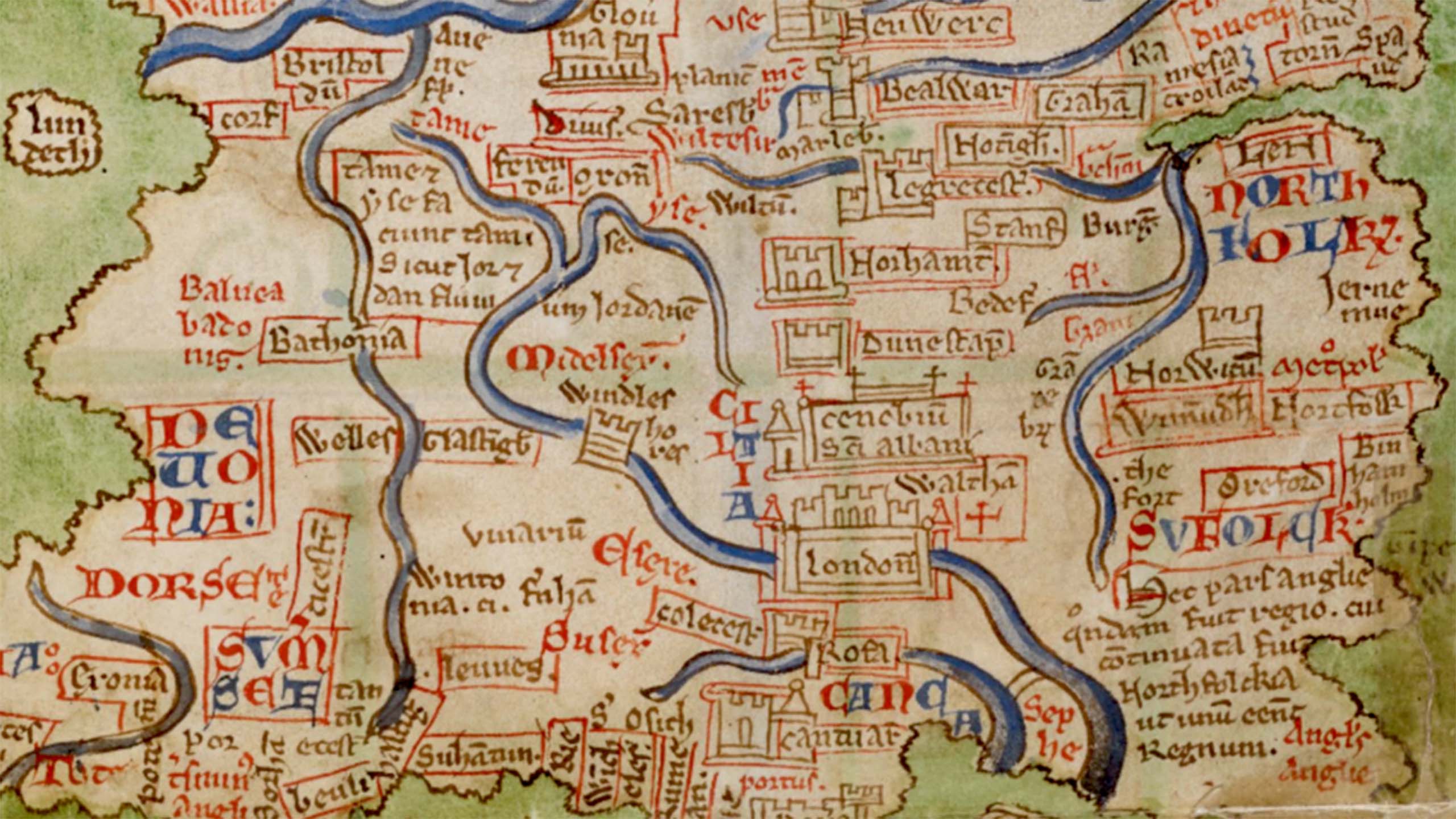
Some Oxford cases reveal rifts among scholars from different parts of the British Isles. Lodgings were often arranged according to students’ home regions, and friction between northerners and southerners, or the Irish, Welsh and English, was common.
In the spring of 1303, student Adam de Sarum was playing with a ball in the street when he was set upon by a trio of Irish scholars, who stabbed him in the face and throat.
Just a month earlier, two Welsh scholars assaulted some passing students who raised a “hue”, at which point a student from Durham attempted to intervene and was beaten to death.
“Before modern policing, victims or witnesses had a legal responsibility to alert the community to a crime by shouting and making noise. This was known as raising a hue and cry,” said Dr Stephanie Brown.
“It was mostly women who raised hue and cry, usually reporting conflicts between men in order to keep the peace.”
Many cases involve the intervention of bystanders, whether summoned by “hue” or not, who end up as victims or indeed perpetrators. “There was an expectation on adult men that maintaining order was part of your social responsibility,” said Eisner.
The medieval sense of street justice coupled with the ubiquity of weaponry in everyday life meant that even minor infractions could lead to murder. London’s cases include altercations that began over eel-skin littering and careless urination, only to end in homicide.
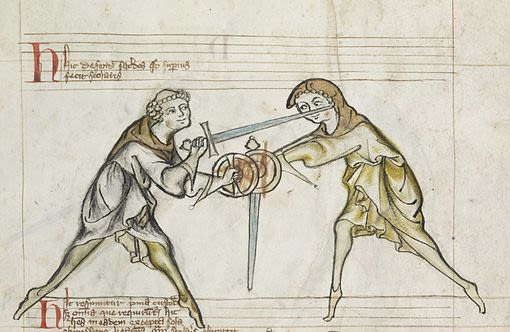
“Knives were omnipresent in medieval society,” said Brown. Many cases feature a knife called a thwytel, later evolved to the word ‘whittle’.
“A thwytel was a small knife, often valued at one penny, and used as cutlery or for everyday tasks. Axes were commonplace in homes for cutting wood, and many men carried a staff.” Some 12% of London’s homicides were committed with a sword.
Even officials of public order – bailiffs, constables, and sergeants – were far from safe. Richard Overhe, a preserver of the “King’s peace”, was brutally attacked by four Oxford students “with swords, bucklers and other arms” during a summer’s night in 1324, and found dead in his home.
“Circumstances that frequently led to violence will be familiar to us today, such as young men with group affiliations pursuing sex and alcohol during periods of leisure on the weekends,” said Prof Eisner.
“Weapons were never far away, and male honour had to be protected.”
“Life in medieval urban centres could be rough, but it was by no means lawless. The community understood their rights and used the law when conflicts emerged.
“Each case provides a glimpse of the dynamics that created a burst of violence on a street in England some seven centuries ago,” Eisner added.
London’s remaining rolls cover nine of the years between 1300 and 1340. York’s date to between 1345 and 1385.
A complete set for Oxford survives for six years preceding 1348, just before the bubonic plague hit the city. Partial Oxford records also exist for fifteen of the years between 1296 and 1324.
Image credits (top to bottom):
Cain killing Abel, Guyard des Moulins, Bible historiale, c 1350-1356, British Library, Royal MS 19 D II, f 10v.
Marten van Cleve (Circle of) - Brawl between soldiers and peasants – painted around 1565.
Map of Britain, late 13th century. British Library, Cotton MS Claudius D VI/1.
From the earliest known surviving European fechtbuch (combat manual).
Fol. 27v of Royal Armouries Ms. I.33.